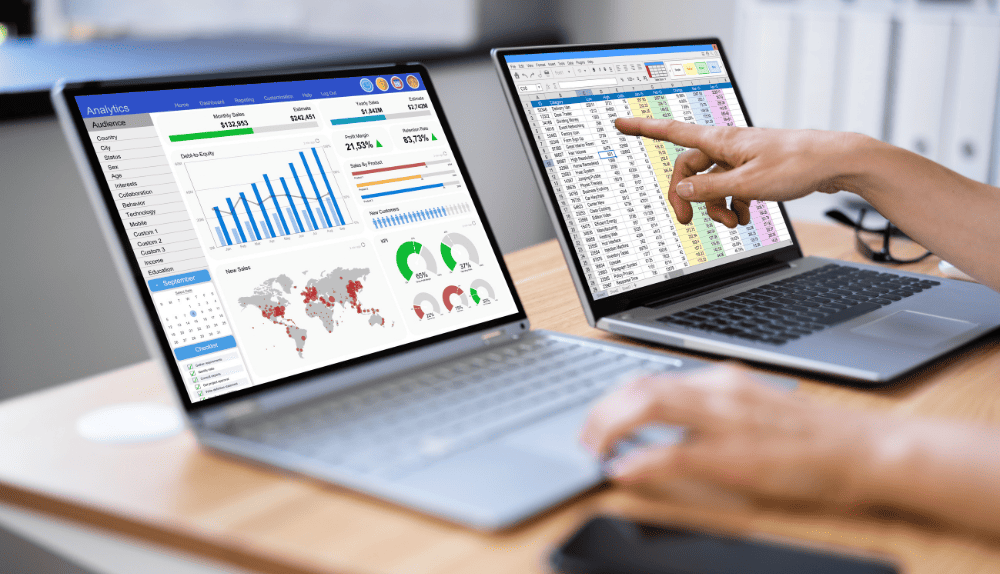
How to Use POS Analytics to Guide Business Decisions
- 25th Jul, 2023
- | By max
- | Uncategorized
What is POS Reporting?
Definition: POS (Point of Sale) reporting involves collecting, analyzing, and interpreting data from a business’s POS system. This data includes transaction details, inventory, customer behavior, and employee performance.
Function: POS reporting organizes this data into comprehensive reports, providing insights into various aspects of the business. This allows for real-time and informed decision-making.
Benefits of POS Reporting in Business

Enhanced Decision Making: POS reports provide valuable insights to guide various business decisions, from staffing and inventory management to marketing strategies and customer engagement.
Real-Time Access: Modern POS systems store data in the cloud, allowing business owners to access reports in real time from anywhere, leading to timely and effective decisions.
Improved Efficiency: Automated POS reports reduce manual work, saving time and increasing operational efficiency.
Customer and Employee Insights: POS reports can reveal patterns in customer purchasing behavior and employee performance, helping businesses optimize sales strategies and workforce management.
Inventory Management: POS reports can help track inventory levels, providing alerts when stock is low and helping to prevent overstocking or understocking.
Growth Planning: By analyzing sales trends and customer behavior, POS reports can help businesses identify opportunities for growth and expansion.
Importance of POS Analytics in Business Decision Making
POS (Point of Sale) analytics play a crucial role in business decision-making for several reasons:
Data-Driven Decisions: POS analytics provide businesses with data-driven insights, enabling them to make informed decisions. This can lead to improved business strategies and increased profitability.
Understanding Customer Behavior: POS analytics can reveal patterns in customer purchasing behavior, such as popular products, peak shopping times, and customer preferences. This information can guide decisions related to product offerings, marketing strategies, and customer engagement initiatives.
Inventory Management: POS analytics can help businesses manage their inventory more effectively by analyzing sales data. They can identify which products are selling quickly and which are not, enabling them to adjust their inventory levels accordingly and prevent overstocking or understocking.
Employee Performance: POS analytics can also provide insights into employee performance, such as sales per employee or peak performance times. This can help businesses decide about staffing, training, and employee incentives.
Financial Planning: POS analytics provide detailed sales reports, aiding financial planning and budgeting. Businesses can track their revenue, identify profitable and unprofitable products, and make financial decisions based on this data.
Identifying Trends and Opportunities: By analyzing sales data over time, businesses can identify trends and opportunities for growth. This can guide decisions about expanding product lines, entering new markets, or adjusting pricing strategies.
Improving Customer Experience: Businesses can enhance customer satisfaction and loyalty by comprehending customer behavior and preferences, allowing them to make informed decisions. Using POS analytics provides valuable insights, guiding business decisions that enhance overall performance and profitability.
Types of POS Reports and Their Uses
Sales Reports
Tracking sales by location or time of day: Sales reports can provide data on sales by location or at specific times of the day. This can help businesses identify peak sales periods or high-performing locations, informing decisions about operating hours and resource allocation.
Identifying top-selling items: Sales reports can also highlight the most popular products or services. This information can guide decisions about inventory management, marketing focus, and product development.
Inventory Reports
Quick and easy inventory checks: Inventory reports provide an at-a-glance view of current stock levels. This enables businesses to quickly check the status of their inventory, saving time and improving efficiency.
Identifying best-selling and slow-selling items: By analyzing inventory movement, these reports can identify which items are selling quickly and which are not. This can inform reordering, pricing, promotions, and product discontinuation decisions.
Employee Reports
Analyzing employee performance: Employee reports can provide insights into individual employee sales performance, tips earned, and revenue generated per hour worked. This can help businesses identify top-performing employees and areas where training may be needed.
Optimizing staffing decisions: By understanding when and where sales are highest, businesses can make informed decisions about staff scheduling, ensuring they have the right coverage at peak times.
Store Reports (for businesses with multiple locations)
Comparing performance across stores: For businesses with multiple locations, store reports can compare performance across different stores. This can reveal which locations are performing well and which may need additional support or resources.
Customizing marketing strategies per location: Store reports can also inform location-specific marketing strategies. For example, if one location sells more of a certain product than another, businesses might run targeted promotions or adjust their product offerings at each location.
Using POS Reports to Make Business Decisions
Staffing Decisions
Identifying busiest days and top-performing employees: POS reports can help identify peak business days and hours and top-performing employees. This information can be used to ensure that the best staff are scheduled during the busiest times to maximize sales and customer service.
Optimizing staff scheduling: By understanding sales trends and employee performance, businesses can optimize their staff scheduling, ensuring they have the right number of staff at the right times to meet customer demand and minimize labor costs.
Inventory Decisions
Using inventory data to make purchase decisions: Inventory reports can provide insights into which products are selling quickly and which are not. This can guide purchasing decisions, helping businesses to maintain optimal inventory levels and reduce waste from unsold products.
Identifying slow sellers for sales or promotions: Inventory reports can also identify slow-selling items. These items might be candidates for sales or promotions to increase their turnover and reduce their inventory footprint.
Marketing Decisions
Using customer information to craft marketing messages: POS systems often include customer relationship management (CRM) features that can provide insights into customer behavior and preferences. This information can be used to craft targeted marketing messages and promotions.
Identifying new versus return customers for targeted marketing: POS reports can also identify new customers. This can inform marketing strategies, such as creating special offers to attract new customers or loyalty programs to retain existing customers.
Store Performance Decisions
Comparing performance by location to customize approach per store: For businesses with multiple locations, store reports can compare performance across different stores. This can help businesses customize their approach for each store, such as adjusting product offerings or marketing strategies based on local customer preferences.
Identifying peak seasons and adjusting strategies accordingly: POS reports can identify peak sales seasons, allowing businesses to adjust their strategies accordingly. For example, they might increase staffing or inventory levels during peak seasons to maximize sales.
Case Study: Successful Application of POS Analytics in Business Decision Making
Case Study 1: Retailer’s Use of POS Analytics for Inventory Management and Customer Insights
The retailer used POS analytics to gain specific insights into consumer behavior and the popularity of products. This helped them to track which consumers prefer which items and how often they buy them.
POS analytics provided the retailer with the history of orders and trends in sales for every product in the store. This data was used to scientifically forecast and plan for the future, informing pricing, promotion, and supply chain optimization.
The retailer also used POS analytics for inventory control, tracking real-time stock counts. This allowed them to make scientific decisions while forecasting, purchasing, and ordering, ensuring that stock levels were optimized.
Case Study 2: Dishthefish’s Use of POS Analytics for Product Insights and Staffing
Dishthefish, a Singapore-based retailer, used Vend POS to learn which products were selling the fastest. The data from the POS informed them about product affinity, which products are frequently purchased together, enabling them to make more relevant recommendations to customers and increase average order value (AOV).
The POS data also helped them understand staff performance, informing staffing decisions. They could schedule their best employees during anticipated extra foot traffic for an upcoming busy season or campaign. They also used the data to ensure enough people on the floor to help all customers at any given time.
These case studies demonstrate how POS analytics can effectively guide business decisions, from inventory management to customer insights and staffing decisions.
Final Thoughts
POS analytics is a powerful tool for guiding business decisions. By leveraging these systems’ data and insights, businesses can make informed decisions that drive growth, improve customer satisfaction, and increase profitability.

